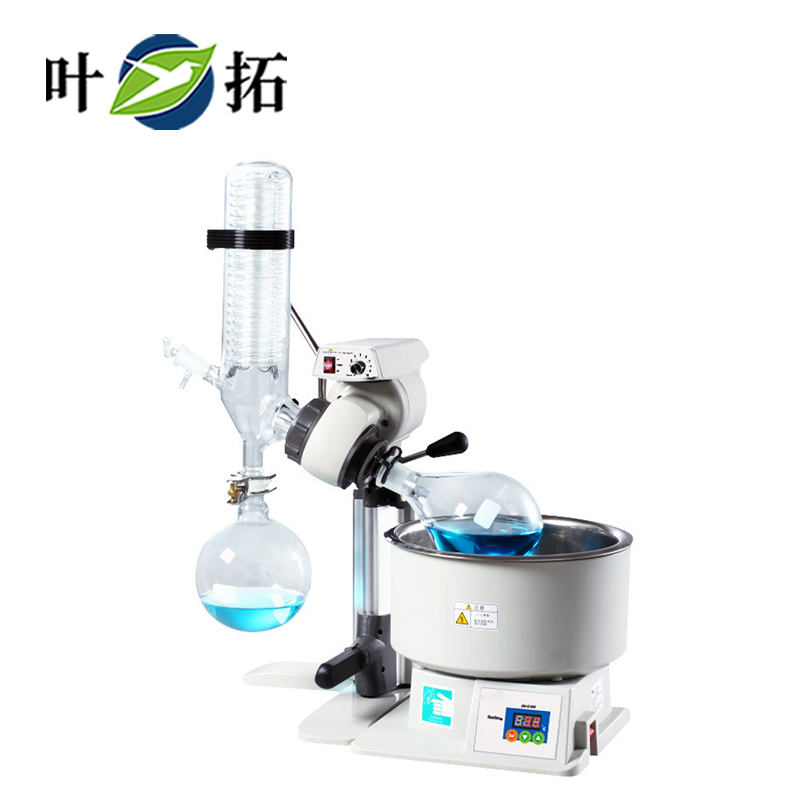Evaporation method
A rotary evaporator is a device that uses heated and rotating solution inside a bottle to achieve rapid evaporation. By rotating the evaporation bottle, the surface area of the solution expands and the evaporation rate accelerates. The evaporated substance condenses and is collected in a condenser or condenser.
Steam distillation is a method of using water vapor to evaporate volatile components from a mixture and collecting them through condensation. After heating the mixture, water vapor mixes with the volatile components in the mixture to form vapor. Subsequently, the vapor is cooled by a condenser to transform back into a liquid state, thereby separating volatile components.
Comparison of advantages, disadvantages, and differences
Evaporation rate:
The rotation operation of the rotary evaporator can accelerate the evaporation process, allowing the solution to evaporate quickly. In contrast, the evaporation rate of steam distillation is slower.
Scope of application:
Rotary evaporators are widely used in laboratory chemical synthesis, solvent removal, sample concentration, and other fields. It is suitable for handling small batches of solutions and can handle various types of solvents. Steam distillation is mainly used for purifying and separating chemical substances, such as extracting refined essential oils and alcohol distillation.
Operation requirements:
The rotary evaporator is relatively simple, easy to operate, and does not require additional equipment. And steam distillation requires a steam generator or distillation device, which is slightly more complex to operate.
Applicable samples:
The rotary evaporator is suitable for processing a large number of samples and can simultaneously process multiple samples, improving work efficiency. Steam distillation is suitable for substances sensitive to volatile components and is typically used to process small batch samples.
Energy consumption and space requirements:
Rotary evaporators typically require a large workspace and consume a certain amount of electrical energy. And steam distillation usually requires a steam generator, which consumes water and electricity. Therefore, in terms of energy consumption and space requirements, steam distillation is relatively high.


 Alibaba Store
Alibaba Store Tmall Store
Tmall Store Jingdong Sstore
Jingdong Sstore







